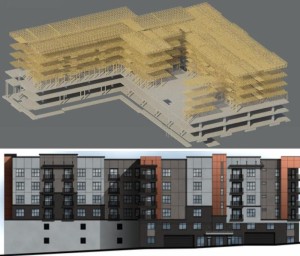 Structural engineering is one of the main sectors within the engineering industry and has been in use since the advent of civilization. The concept involves analyzing and designing structures such as buildings, bridges, towers and other types of infrastructure.
Structural engineering is one of the main sectors within the engineering industry and has been in use since the advent of civilization. The concept involves analyzing and designing structures such as buildings, bridges, towers and other types of infrastructure.
There are six main elements of structural engineering. One of these elements is stability – a structure must be stable. One of the measures that engineers take to ensure the stability of a project is by incorporating adequate bracing.
Builders are expected to ensure that all structural loads have paths for transferring the loads to the ground. A structure must also acquire components adopting adequate strength to resist the weight of loads that may be put on it.
Experts consider loads and a structure’s geometric layout to determine the ideal structural materials for the application. The main construction materials include steel, concrete and wood, but there are many hybrid materials that can be used.
Branches of Structural Engineering
- Structural design.
This aspect of engineering aims to determine the ideal structure for a specific purpose. It also involves implementing tasks such as material types to be used and strategic workflow with the primary intent to help a structure sustain and arrange differing components.
Structural designs help to ensure that a project is stable and strong enough to support the design loads. When coming up with structural designs, experts take into account the preparation of drawings to present them to contractors involved in the construction.
- Structural Analysis.
The analysis involves response calculation of a structure to various loads and deformations. It aims to ascertain the stability of a structure during its lifetime. During structural analysis, engineers are involved in selection of construction materials to ensure it remains strong.
Benefits of Structural Engineering from McNeil Engineering
- Safety Evaluation.
This process aims to predict the safety while assessing the stability of a structure when put in the condition of different types of loading. Experts from McNeil Engineering ensure that workers are safe during planning, designing and building stages.
- Overall Structure Assessment.
The exercise provides information for the assessment of materials needed, design efficacy and evaluating costs to ensure optimal utilization of resources.
Building Information Modeling (BIM) in Engineering
BIM has revolutionized the construction industry over the years by streamlining the process of design and construction. The procedural flow of building information modeling varies depending on designers, contractors and owners.
Benefits of using Building Information Modeling in Engineering
Sharing and collaborations are essential for the successful completion of construction projects. However, stakeholders have experienced various challenges during collaborative work. Our engineers rely on BIM’s cloud feature to ensure a smooth process during collaborative works.
The cloud functionality offers engineers access to information in all stages of a construction project. Experts can view various projects wherever they are provided they have a connected device. As a result, there is effective communication and better coordination between stakeholders.
With building information modeling, you do not need to worry about the disappearance of files and corruption. The technology also helps to ensure better visualization of a construction project. When paper or 2D designs are used, one may not view the entire project.
Our engineers use building information modeling as it allows them to implement every aspect of a structure, including floor plans and 3D designs. The technology also allows engineers to view a project at any time of the day and its energy performance.
BIM is also a cost-saving technique. Without the software, engineers may start working on a project and realize later there is a clash in the structure. If that happens, a significant amount of money may be needed to rectify the problem.
Building information modeling allows engineers to automatically detect clashes. As a result, they can detect and rectify any potential clashes in advance, thus significantly reducing the chances of on-site clashes are greatly minimized.
BIM allows engineers to gain access to models and sub-models for every stage in construction. The model facilitates steps and processes to achieve the desired outcome. With the software, it becomes easy to present different designs.
McNeil Engineering is a reputable engineering firm. We have been operational for many years now and offer a wide range of services. Our notable list of service offerings includes civil engineering, laser scanning and surveying, landscape architecture, roofing, and paving consulting.
Questions or comments? We would love to chat with you, don’t hesitate to call.








